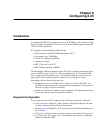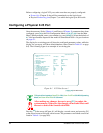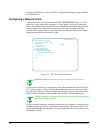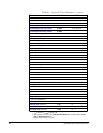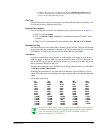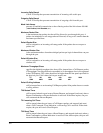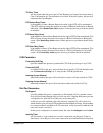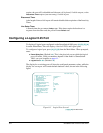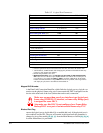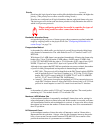
8-8 SmartSwitch 1800 4.0 User Guide, Rev 01
Modulo
is the number of values used in X.25 level 2 sequenced packets. The actual frame num-
bering is
0–7
for modulo 8 and
0–127
for modulo 128.
Maximum LAPB Window Size
is X.25 value
K
, the maximum number of sequentially numbered I-frames that can be
waiting for acknowledgment. If this number is exceeded, no more frames will be
transmitted until an acknowledgment is received. A larger value allows faster
throughput.
N2 Retransmit Count
is X.25 value
N2
, the maximum number of times the node will attempt to send an I-
frame after a
Retransmit Period
expiration. A larger value for this parameter increases
the probability of an eventual correct transfer between DTE and DCE, but a smaller
value permits faster detection of a permanent error condition.
T1 Retransmit Period
is the length of time before re-transmission of an I-frame if the previous transmission
is not acknowledged. If the period expires, the SmartSwitch software will reset the
timer and transmit a supervisory frame demanding immediate acknowledgment. Also,
the
Maximum Retransmissions
(see that entry) counter will be incremented. The
default value of
2000 ms
allows avoidance of unnecessary retransmission of frames
that have merely been delayed.
T2 Wait Ack Period
is the length of time the node will delay acknowledgment of a received I-frame if there
is no outgoing I-frame to be sent. If during this period the node receives an I-frame for
transmission, the acknowledgment will be sent with it, and the delay timer will be
reset.
T3 Link Alive Period
is the length of time after which the node will poll its counterpart if there is no data
transfer.
Logical DCE
defines the port as (if
Y
) logical DCE or (if
N
) DTE. The port must be configured as
the opposite of the device at the other end of the connection.
Logical and physical DCE/DTE are independent of each other (e.g., a port can be a
physical DCE and logical DTE).
Generate Clock
specifies whether the port will generate the clock necessary to synchronize traffic over
the link. If the port is a physical DCE (determined by the port's I/O cable interface),
configure
Generate Clock
as
Y
, since the physical DCE generates clock. If the port is
DTE, configure
Generate Clock
as
N
.
Rcv Clock (TT) from DTE
allows the clock to be looped back from the DTE using the TT (Terminal Timing)
signal, which can be helpful on high-speed lines. Generally, if the local interface is
physical DCE and the line speed is above 256 Kbps, this parameter should be set to
Y
.
(Make sure the remote DTE is configured to provide the terminal timing.)




